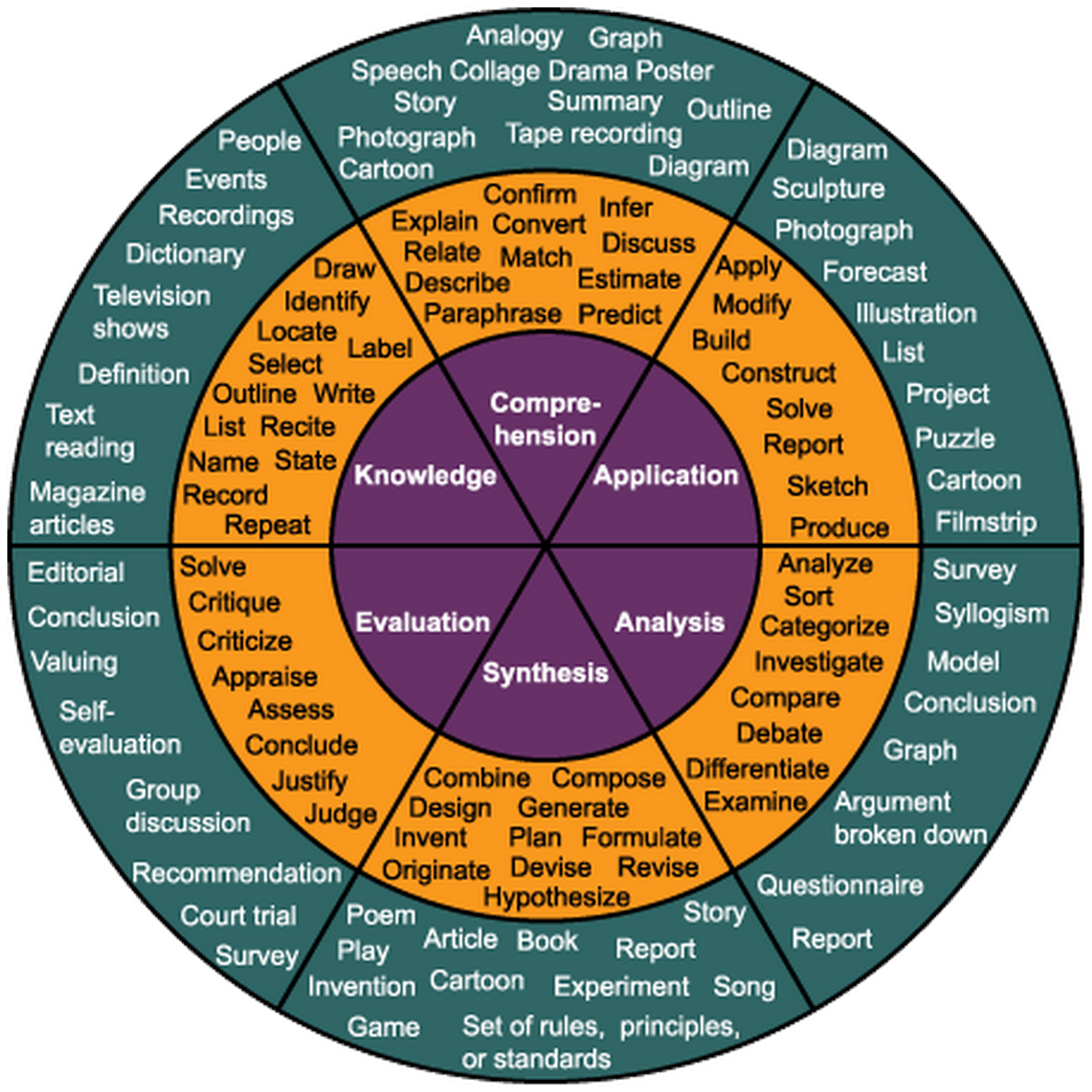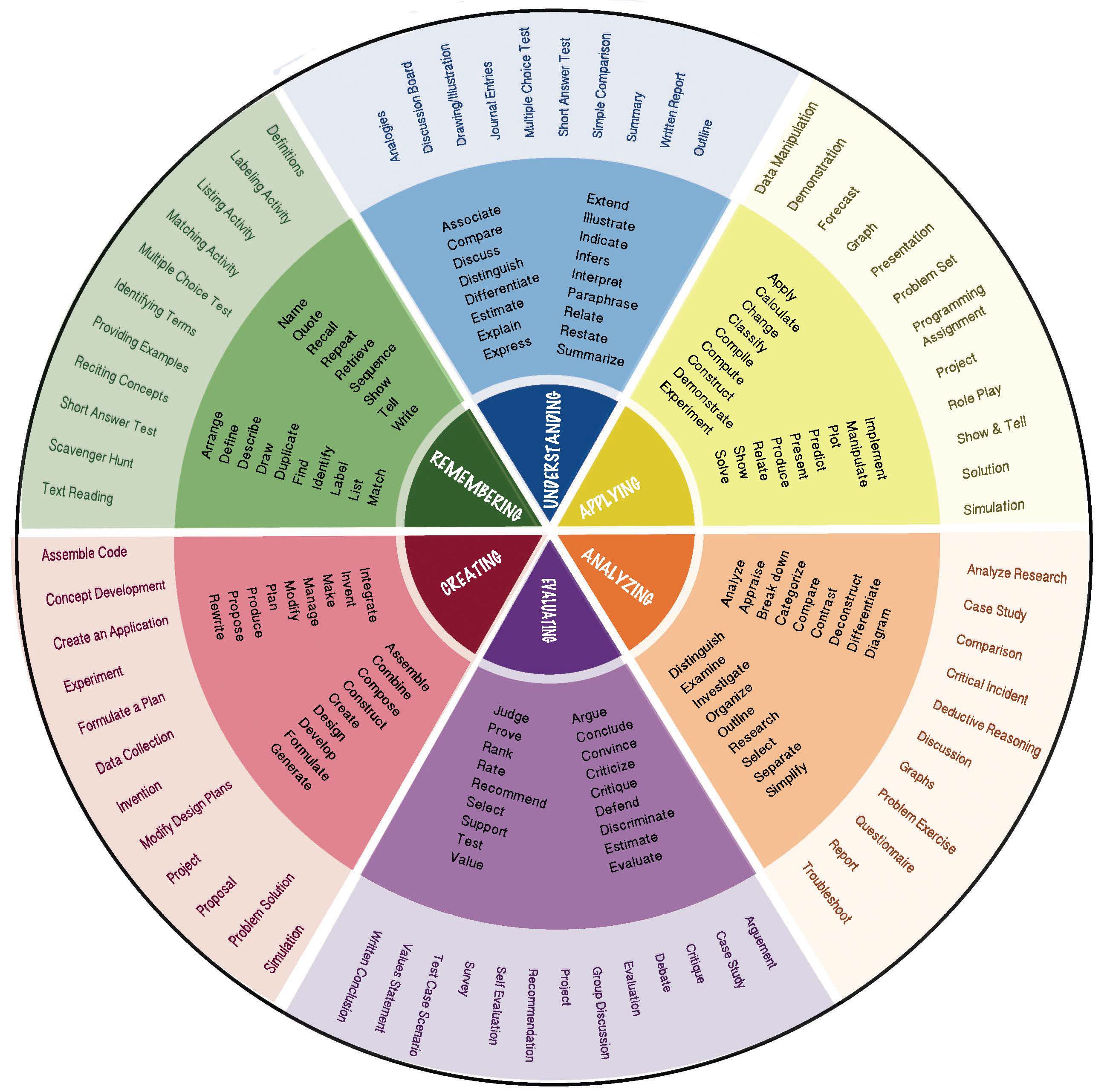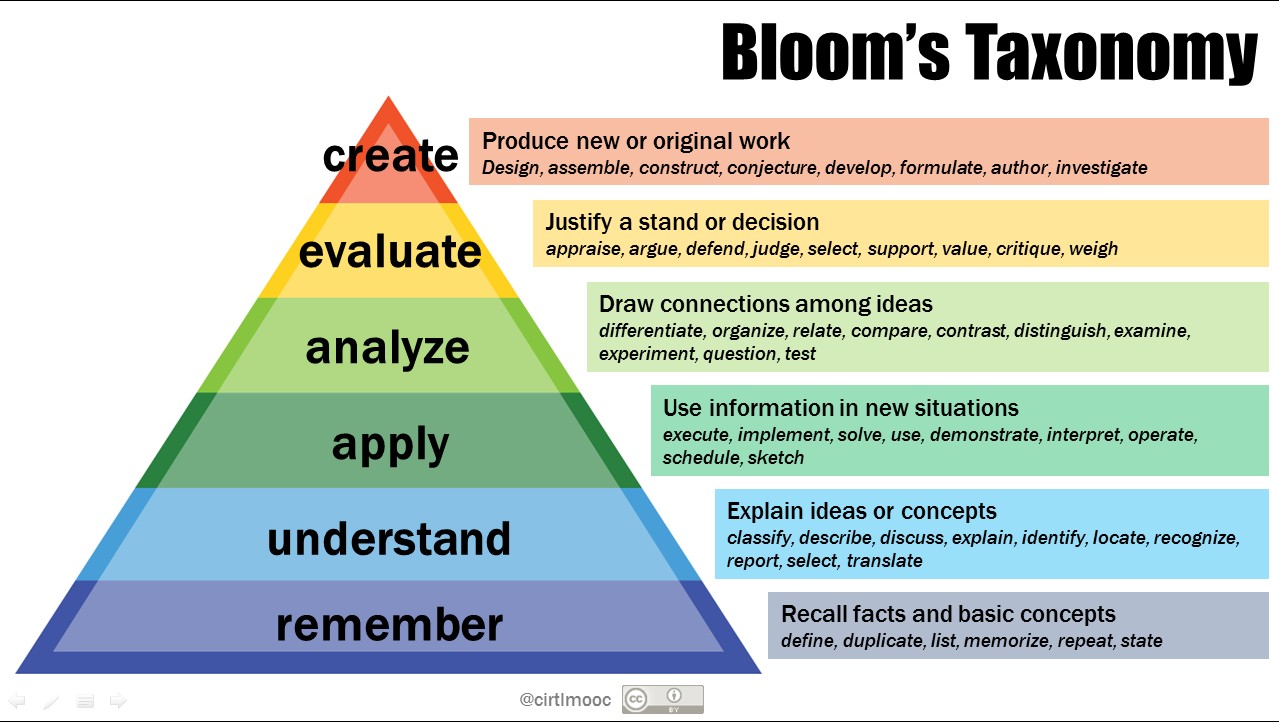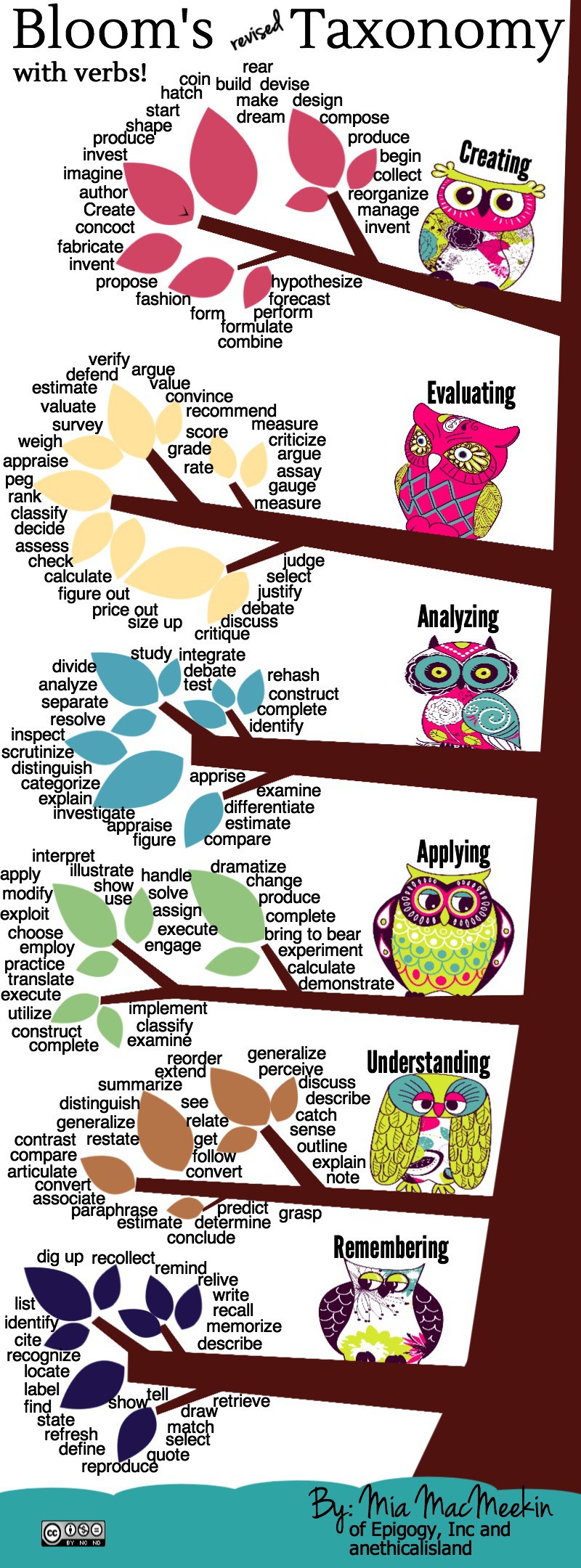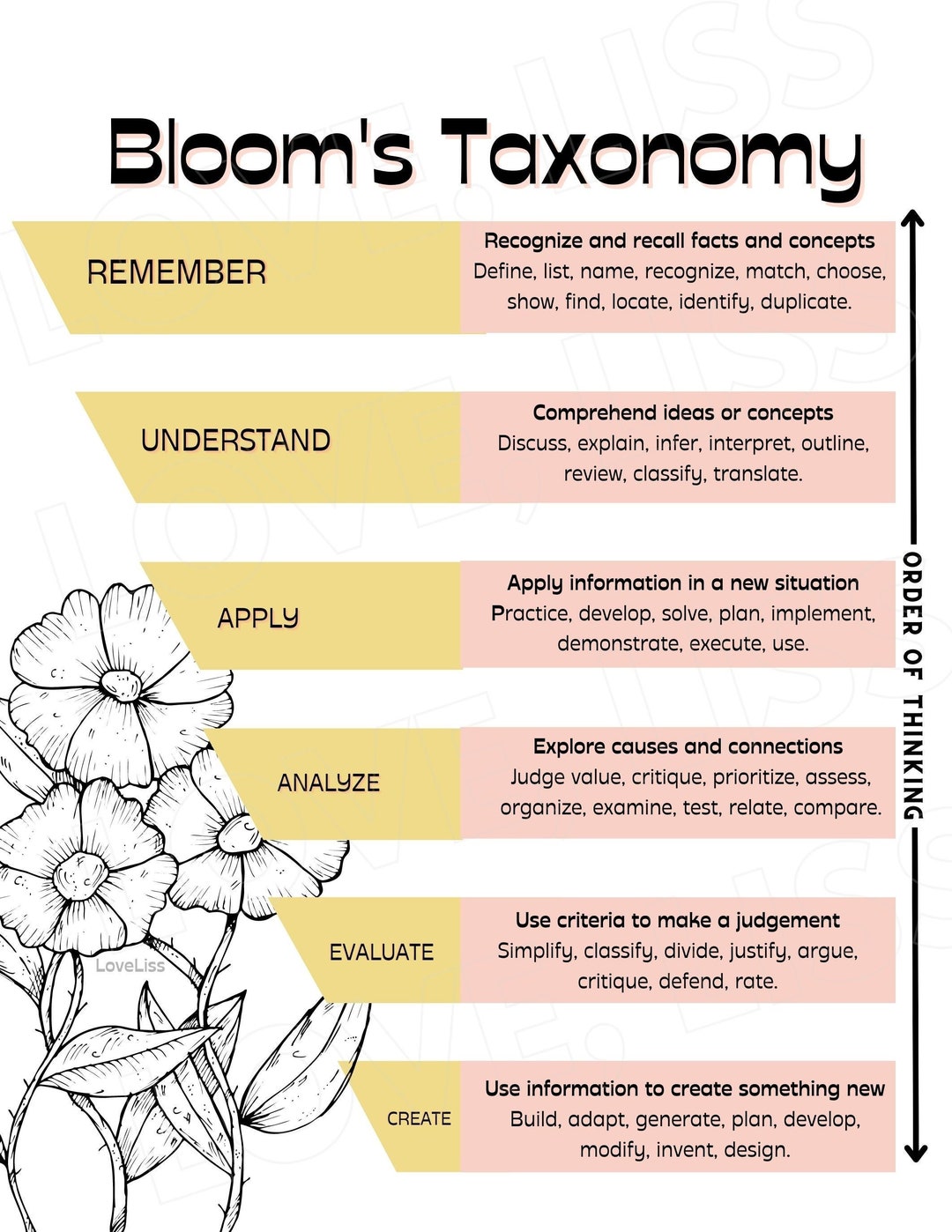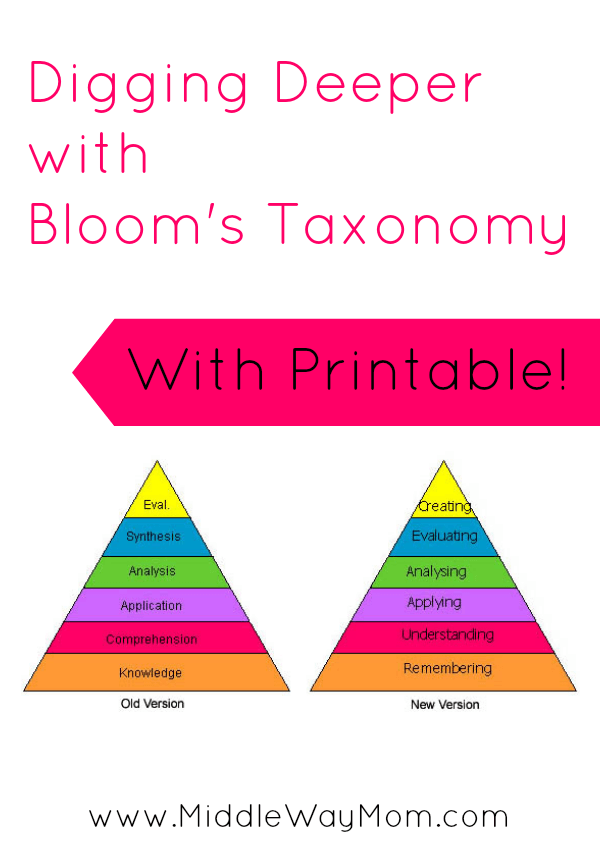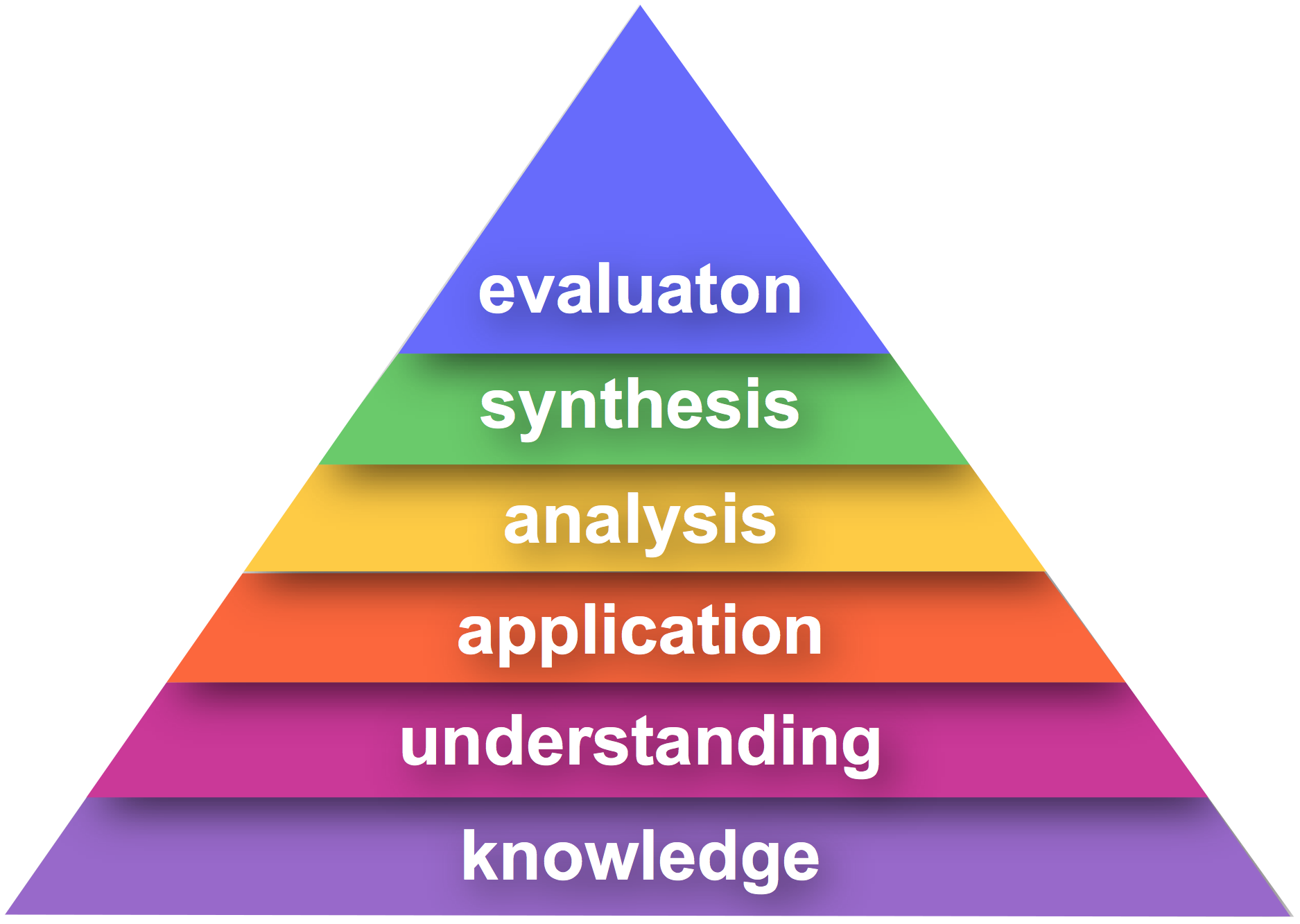Blooms Taxonomy Printable
Blooms Taxonomy Printable - The theory is based upon the. Bloom’s taxonomy can be useful for course design because the different levels can help you move students through the process of learning—from the most fundamental remembering and. Students can use this learning tool to develop questioning strategies for each of the six (recently updated) levels. Which is true or false.? Benjamin bloom and colleagues (1956) created the original taxonomy of the cognitive domain for categorizing level of abstraction of questions that commonly occur in educational settings. The theory is based upon the. The old and new bloom's taxonomy pyramid, a chart that explains different levels of bloom's taxonomy, and a practice worksheet. Note the change from nouns to verbs associated with each level. Benjamin bloom created a taxonomy of measurable verbs to help us describe and classify observable knowledge, skills, attitudes, behaviors and abilities. Solve problems to new situations by applying acquired knowledge, facts, techniques and rules in a different way. Note the change from nouns to verbs associated with each level. Can you write a brief outline.? Benjamin bloom and colleagues (1956) created the original taxonomy of the cognitive domain for categorizing level of abstraction of questions that commonly occur in educational settings. Remember previously learned information comprehension: Use the chart to help formulate effective learning. Bloom’s taxonomy of measurable verbs cognitive level illustrative verbs knowledge: A taxonomy for learning, teaching, and assessing,. Can you write in your own words.? Construct a model to demonstrate how it will work. The old and new bloom's taxonomy pyramid, a chart that explains different levels of bloom's taxonomy, and a practice worksheet. Construct a model to demonstrate how it will work. The chart below arranges bloom's levels of cognitive activity from simple to complex and lists verbs that correspond to each level. Which is true or false.? Guide to the revised bloom’s taxonomy *contents of this list compiled from the work of: Prepare a flow chart to illustrate the sequence of events. Can you write in your own words.? What do you think could have happened next.? Bloom’s taxonomy of measurable verbs cognitive level illustrative verbs knowledge: Bloom’s taxonomy can be useful for course design because the different levels can help you move students through the process of learning—from the most fundamental remembering and. The two graphics show the revised and original. Bloom’s taxonomy can be useful for course design because the different levels can help you move students through the process of learning—from the most fundamental remembering and. Make a diorama to illustrate an important event. The chart below arranges bloom's levels of cognitive activity from simple to complex and lists verbs that correspond to each level. The theory is based. Students can use this learning tool to develop questioning strategies for each of the six (recently updated) levels. Note the change from nouns to verbs associated with each level. In this printable, you get: The two graphics show the revised and original taxonomy. The chart below arranges bloom's levels of cognitive activity from simple to complex and lists verbs that. Can you write a brief outline.? Construct a model to demonstrate how it will work. Benjamin bloom and colleagues (1956) created the original taxonomy of the cognitive domain for categorizing level of abstraction of questions that commonly occur in educational settings. Bloom’s taxonomy can be useful for course design because the different levels can help you move students through the. Students can use this learning tool to develop questioning strategies for each of the six (recently updated) levels. Bloom’s taxonomy is a hierarchical model that outlines six categories of learning and application skills that progress from less to more complex. Major categories in the cognitive domain of the taxonomy of educational objectives (bloom, 1956) descriptions of the major categories in. Benjamin bloom and colleagues (1956) created the original taxonomy of the cognitive domain for categorizing level of abstraction of questions that commonly occur in educational settings. Guide to the revised bloom’s taxonomy *contents of this list compiled from the work of: In this printable, you get: Note the change from nouns to verbs associated with each level. Judgments about make. Construct a model to demonstrate how it will work. Guide to the revised bloom’s taxonomy *contents of this list compiled from the work of: The two graphics show the revised and original taxonomy. The old and new bloom's taxonomy pyramid, a chart that explains different levels of bloom's taxonomy, and a practice worksheet. Benjamin bloom and colleagues (1956) created the. Bloom’s taxonomy of measurable verbs cognitive level illustrative verbs knowledge: Can you write in your own words.? The two graphics show the revised and original taxonomy. Guide to the revised bloom’s taxonomy *contents of this list compiled from the work of: Construct a model to demonstrate how it will work. Students can use this learning tool to develop questioning strategies for each of the six (recently updated) levels. In this printable, you get: Note the change from nouns to verbs associated with each level. Benjamin bloom created a taxonomy of measurable verbs to help us describe and classify observable knowledge, skills, attitudes, behaviors and abilities. Bloom’s taxonomy is a hierarchical. Can you write a brief outline.? In this printable, you get: Benjamin bloom created a taxonomy of measurable verbs to help us describe and classify observable knowledge, skills, attitudes, behaviors and abilities. The old and new bloom's taxonomy pyramid, a chart that explains different levels of bloom's taxonomy, and a practice worksheet. Bloom’s taxonomy of measurable verbs cognitive level illustrative verbs knowledge: Which is true or false.? Note the change from nouns to verbs associated with each level. Updated the taxonomy to reflect relevance to 21st century work. Prepare a flow chart to illustrate the sequence of events. The chart below arranges bloom's levels of cognitive activity from simple to complex and lists verbs that correspond to each level. Judgments about make inferences and find evidence to support generalizations. The two graphics show the revised and original taxonomy. Can you write in your own words.? Solve problems to new situations by applying acquired knowledge, facts, techniques and rules in a different way. The graph demonstrates the six aspects of learning, remembering, What do you think could have happened next.?8 Wonderful Blooms Taxonomy Posters for Teachers Educational
Printable Bloom's Taxonomy
Bloom’s Taxonomy Center for Teaching Vanderbilt University
Bloom's Taxonomy Verbs Free Classroom Chart
Bloom's Revised Taxonomy Action Verbs infographic eLearning Infographics
Bloom's Taxonomy Printable Reference Etsy
Digging Deeper with Bloom’s Taxonomy With Printable!
Bloom's Taxonomy Levels of Learning The Complete Post
Bloom's Taxonomy Printable Posters Editable in Canva Etsy Canada
Free Printable Bloom S Taxonomy Printable Word Searches
Use The Chart To Help Formulate Effective Learning.
Guide To The Revised Bloom’s Taxonomy *Contents Of This List Compiled From The Work Of:
Benjamin Bloom Created A Taxonomy Of Measurable Verbs To Help Us Describe And Classify Observable Knowledge, Skills, Attitudes, Behaviors And Abilities.
Benjamin Bloom And Colleagues (1956) Created The Original Taxonomy Of The Cognitive Domain For Categorizing Level Of Abstraction Of Questions That Commonly Occur In Educational Settings.
Related Post:
